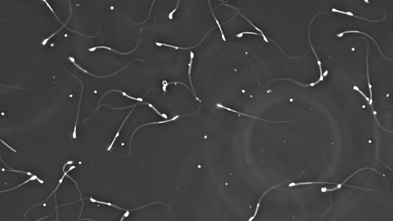
Concerns about male infertility have prompted researchers to investigate potential environmental causes, particularly the impact of **per- and polyfluoroalkyl substances** (PFAS). A recent study led by **Brett Nixon**, a professor at the **University of Newcastle**, highlights how exposure to these chemicals may contribute to declining sperm production and testosterone levels in male mammals.
In a striking comparison, **rams** can produce about **100 billion sperm** per ejaculation, whereas the average human male produces around **100 million**. This disparity raises questions about the factors influencing human fertility. Nixon’s research suggests that humans may be at a disadvantage due to various environmental toxins, including air pollution, microplastics, and endocrine disruptors.
The study examined mice exposed to PFAS at levels similar to those found in contaminated groundwater in **Williamtown**, Australia. The findings revealed a significant reduction in sperm production and testosterone, as well as alterations in the epigenome of sperm that could affect embryo development. While these results offer valuable insights, they cannot be directly applied to humans due to fundamental biological differences.
Nixon emphasizes that while observational studies have linked exposure to PFAS with lower sperm counts in humans, the evidence remains mixed. He advocates for further research into the effects of these chemicals on human fertility, despite the ethical challenges of conducting randomized controlled trials involving human subjects.
The issue of declining sperm counts is supported by the **Sperm Count Decline hypothesis**, which posits that sperm count and quality have decreased by more than **50 percent** over the past five decades. This theory is backed by influential meta-analyses from **Dr. Hagai Levine**, an Israeli epidemiologist, who has documented alarming trends in male fertility.
Nixon aligns with Levine’s findings, stating, “I firmly believe in that data. And the rate at which [sperm count declines are] occurring suggests this is not a genetic effect; it’s an environmental effect.” Such conclusions echo the concerns voiced by **Dr. Shanna Swan**, who has highlighted the potential implications of these findings in her book, **Countdown**. Swan warns that by **2045**, men’s sperm quality may decline to the point where in vitro fertilization (IVF) could become a necessity for most couples attempting to conceive.
The research underscores the urgent need to address environmental factors impacting male fertility. With rising concerns about the effects of toxic substances, scientists like Nixon are committed to unraveling the complexities of male infertility, hoping to provide clearer answers for those affected. As the global community grapples with these findings, the implications for reproductive health could be profound, marking a critical juncture in understanding human reproduction in the face of environmental challenges.






